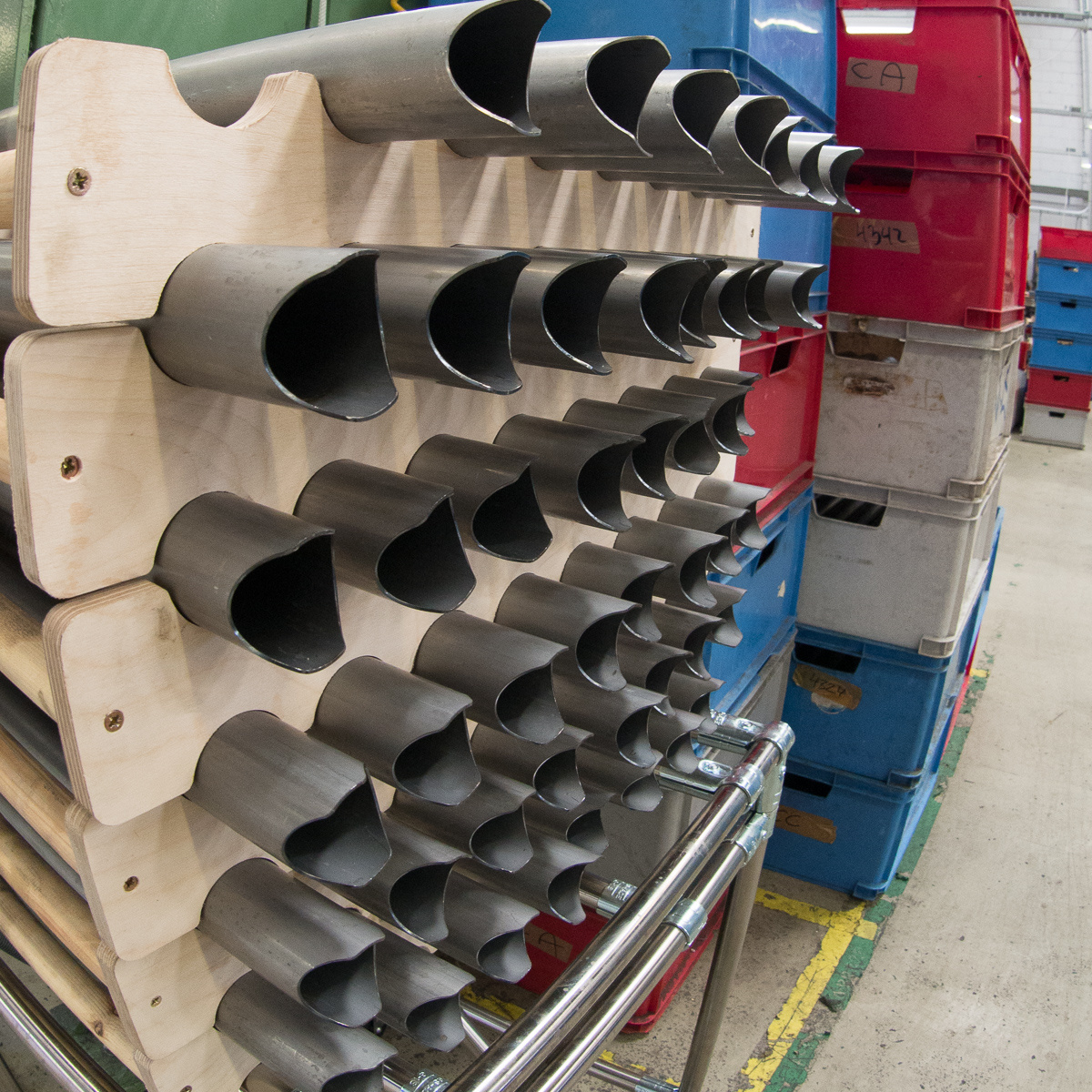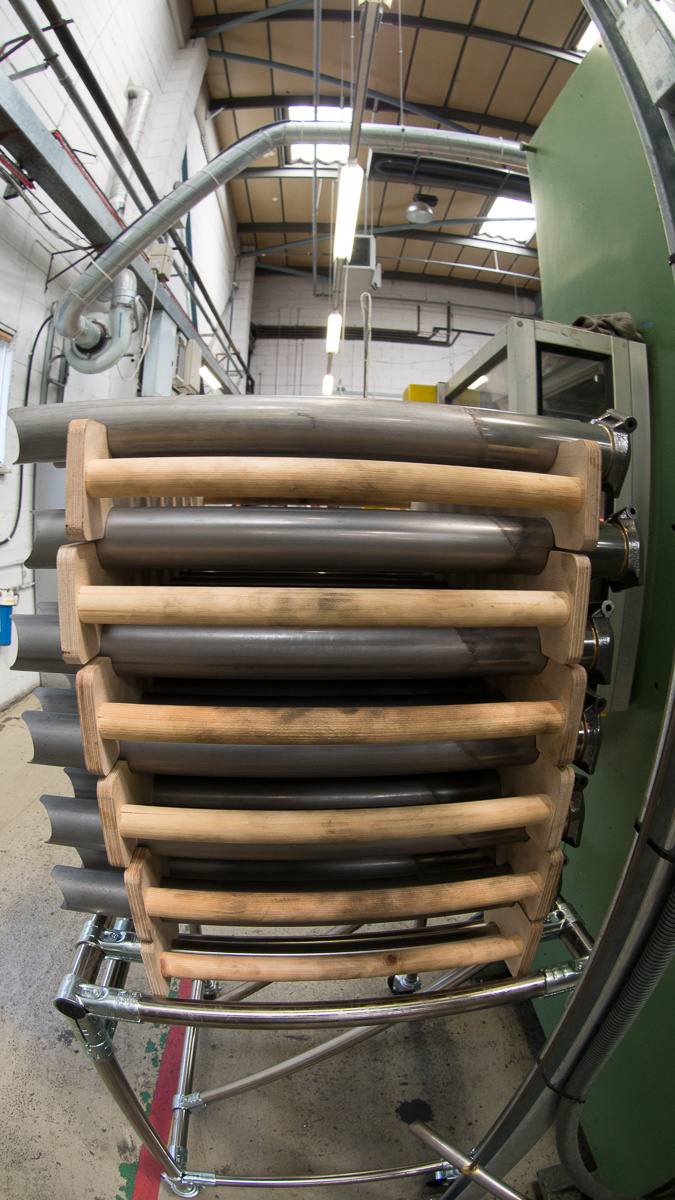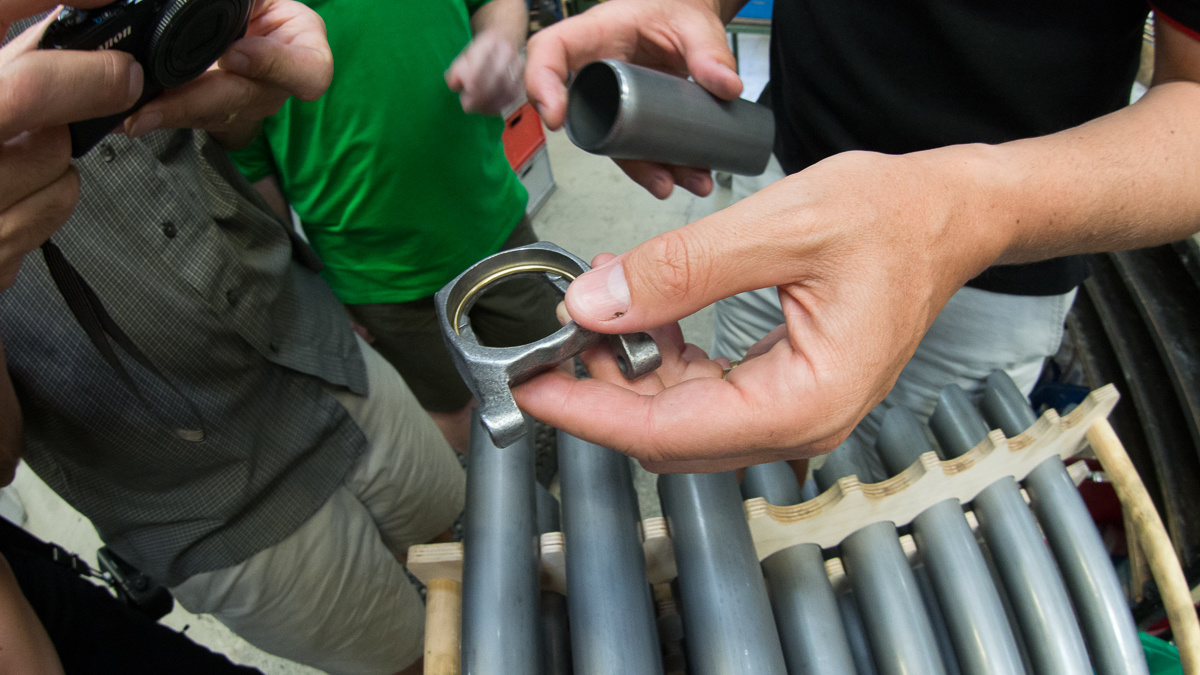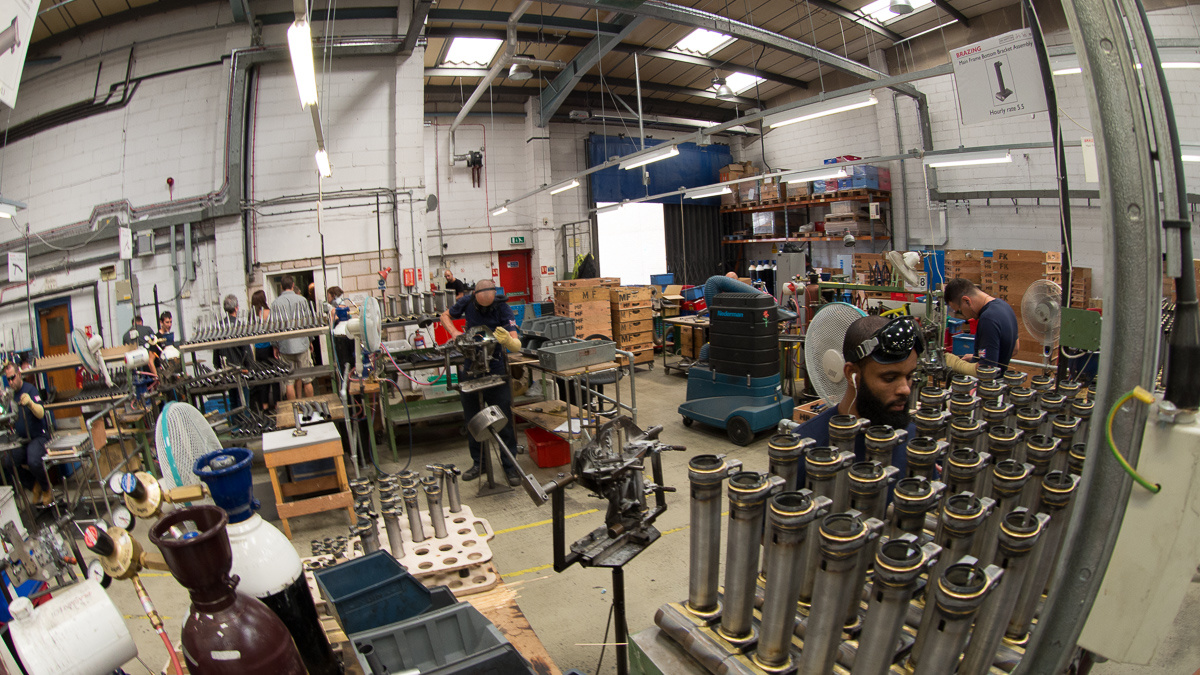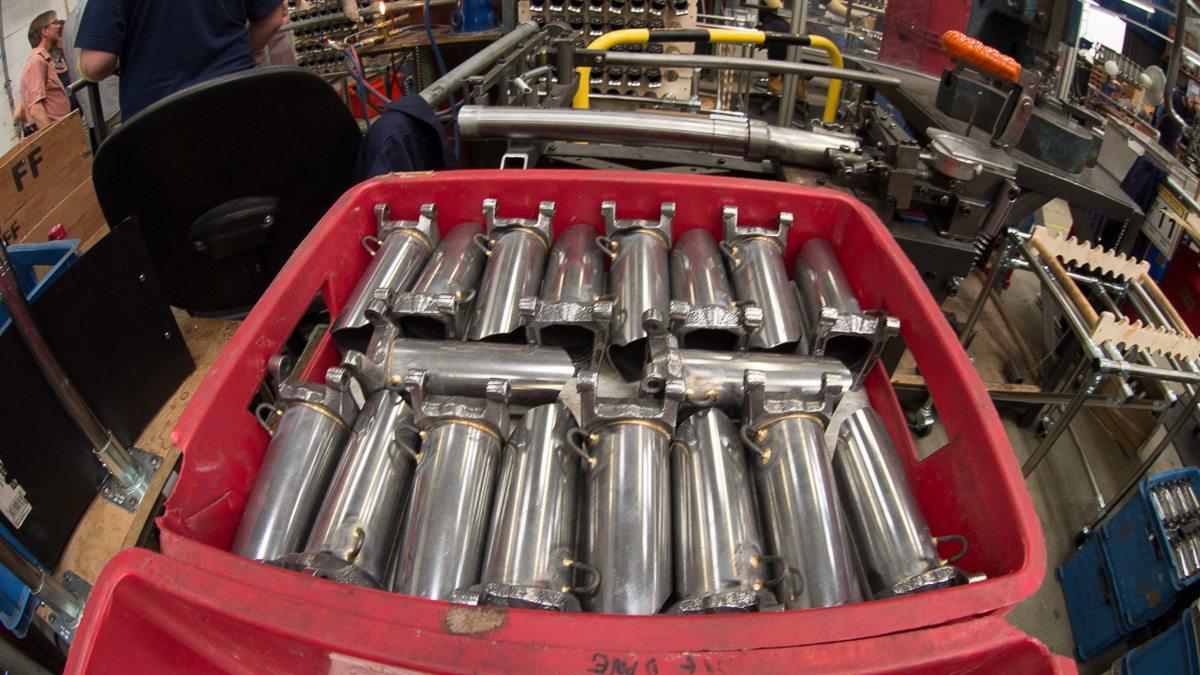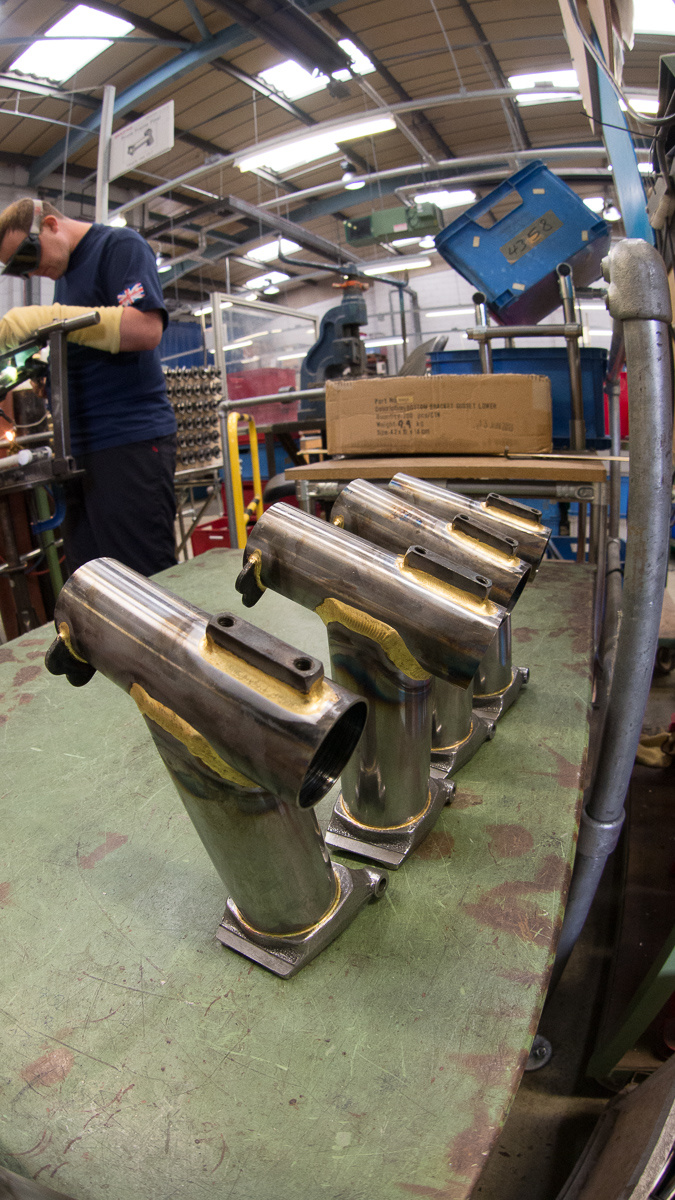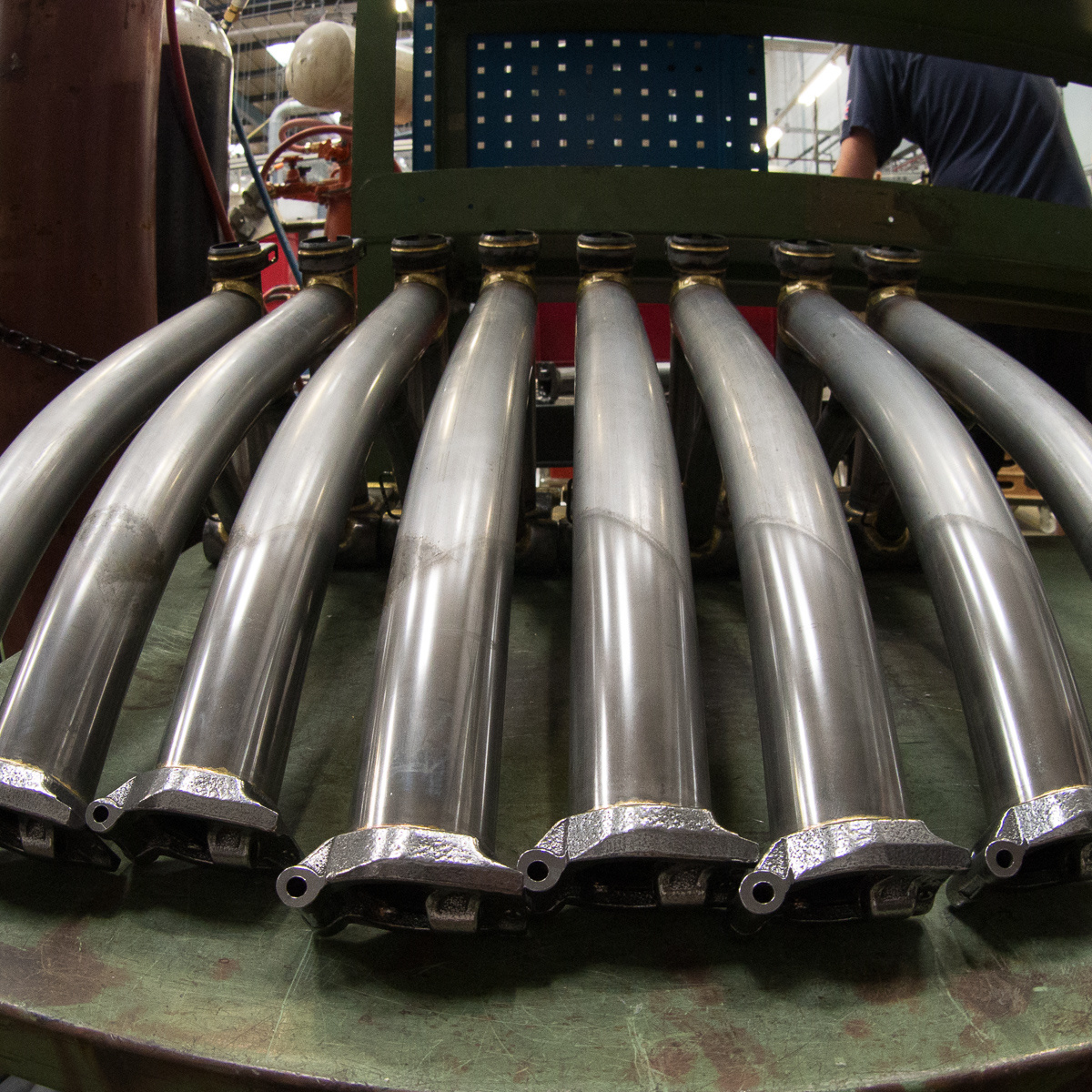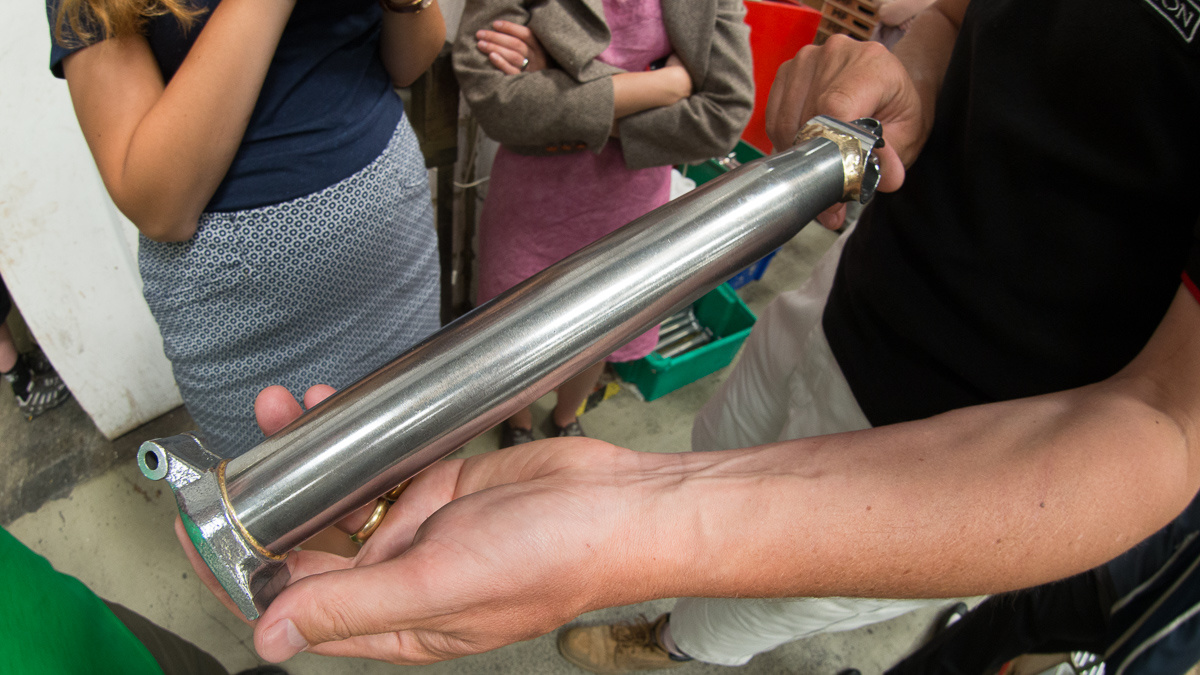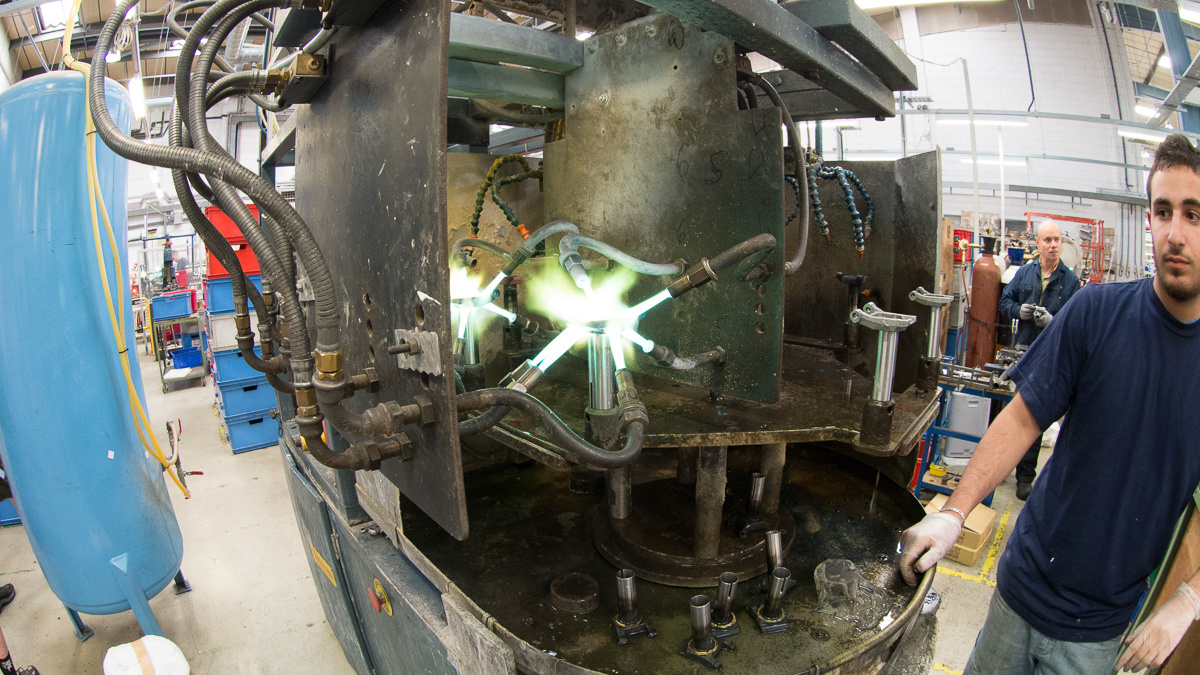How a Brompton Frame Is Made
Brompton goes to great lengths to make a folding bike that’s tough enough for decades of daily use. That includes choosing certain materials and manufacturing techniques over others to maximize the bike’s lifespan, like using chromoly steel in lieu of a lighter material like aluminum. Bromptons differ from conventional bikes with double diamond frames in that its single tube and folding mechanisms put the frame under unique stresses. This is a key reason Brompton uses steel as a mainframe material. While not as lightweight as aluminum, it is better able to absorb these stresses, so you can use your Brompton day in and day out for years. The steel frames are made as light and durable as possible thanks to Brompton’s frame building process, which is as one-of-a-kind as the bike itself.
Most bicycle frames consist of metal tubes joined by either brazing or welding. Welding can be used to join steel, aluminum, and titanium tubing. Brazing is used almost exclusively on steel frames. Welding joins the tubes by melting and fusing them together under concentrated heat. Usually, a filler metal is added. Welding temperatures must exceed the melting point of both the frame material and filler metal. Brazing temperatures are considerably lower than welding temperatures, and the process does not melt the frame material, only the filler metal. Brompton’s titanium parts are welded. They braze their steel frame parts.
There are two types of brazing, fillet brazing and lug brazing. Fillet brazing is applying melted filler (most often bronze) over adjacent frame tubes. It cools and hardens to form a joint which connects the two tubes and is sanded smooth using files and emery cloth. The second type of brazing, lugged brazing, uses a sleeve or lug to connect the tubes. Metal filler is melted and pulled between the lug and tube by heat and a force called capillary action. Capillary action is when liquid flows in narrow spaces without the assistance of, or even in opposition to, external forces like gravity. It occurs when adhesion (the tendency of dissimilar particles to cling to one another) is stronger than cohesion (the sticking together of particles of the same substance). Paper towels absorb liquid through capillary action. It’s how your moisture wicking jersey wicks sweat away from your skin and ink is drawn to the tip of a fountain pen. For it to work, the filler metal must have a melting temperature above 840 degrees but below the melting point of the metals being joined because the frame tubes must remain solid.
Brompton uses lug brazing to braze the tube inside the hinge plate. The hinge is essentially a lug for the frame tube that enters it. Prior to 2004, the hinges were butted, meaning the tube was brazed up against the hinge. Switching methods changed the wheelbase from short (1015 mm) to long (1045 mm) and resulted in a stronger joint and a slightly stiffer frame. Brompton frames are fillet brazed by hand, with the exception of the hinges, which are autobrazed in a machine designed and manufactured specifically for the job, a computer-controlled, robotic brazing machine so unique you won’t find it anywhere else in the world. Brompton brazes their steel frame parts, rather than welding them, to make their bikes as light and durable as possible. Because the component parts are not melted as they are with welding, the physical properties of the materials are not altered. Because brazing temperatures are considerably lower than welding temperatures for the same base metals, the process uses less energy and minimizes stress and distortion.
The process starts with steel tubes, which are cut to length and put in the auto-brazing machine. The auto-brazing machine attaches parts to each tube. To get the right amount of heat without distortion, the jig rotates to evenly distribute heat from multiple gas burners while cameras monitor metal color, a temperature indicator. After that, they are cleaned in an agitator. Once cleaned, the tubes are bent into shape and joined together to form the frame. Brompton’s brazers put the frame parts together by hand using a filler rod made of copper and zinc (brass). Each bike is stamped with the signature of the brazer who worked on it.
No experience is required to become a brazer. These highly-skilled workers are recruited from the factory floor and trained on site through an in-house apprenticeship program. Because it’s hard to find qualified brazers (there aren’t many who hold that job title), Brompton takes people from welding and non-welding backgrounds, and every one of Brompton’s employees, from the engineers to the receptionists, gets a chance to try it. The training process starts with an aptitude test. Once they’ve proven successful at that, they’ll advance into the training program. During a brazer’s training, there are a number of steps that must be completed. Brompton has a pay structure, and as they move up the structure, their pay increases. How long the process takes depends on the brazer. One person completed the training in six months. For some, it took 18 months. Generally, it takes anywhere between 18 and 24 months to train into the full standard of lacquer quality product. The elite work in the section that brazes raw lacquer finish bikes. Their training is more intense because the bikes are sold with a clear finish and must be flawless to pass inspection. One of the biggest challenges a brazer faces is working with different types of materials and temperatures. When brazing parts together, they deal with temperatures up to 2,732 degrees or three times the heat of the hottest planet in the solar system. Because they work with highly toxic, flammable chemicals, they wear protective clothing and a safety helmet with an air vent, which can feel very heavy at the end of the day. Brazing is physically tough and requires a lot of concentration. A good brazer has a steady hand, patience, and an eye for detail. Brompton doesn’t sand smooth their brazing, a feature you can see best on a raw lacquer frame. It’s part of the reason why the brazer must be highly skilled and why each frame is so special. Each brazer has a signature they stamp on the parts of the bike they work on to put their name to this difficult task.
Eighty percent of the componentry on a Brompton is designed and made exclusively for Brompton. Brompton uses so many unique parts and engineering solutions that they’ve had to produce over 500 different purpose built tools, all designed and developed in-house. The manufacturing process is as unique as the finished product. If you want to see hand brazing and automatic brazing in person, you can visit the Brompton factory by booking a factory tour. You can get your very own hand brazed Brompton here.
